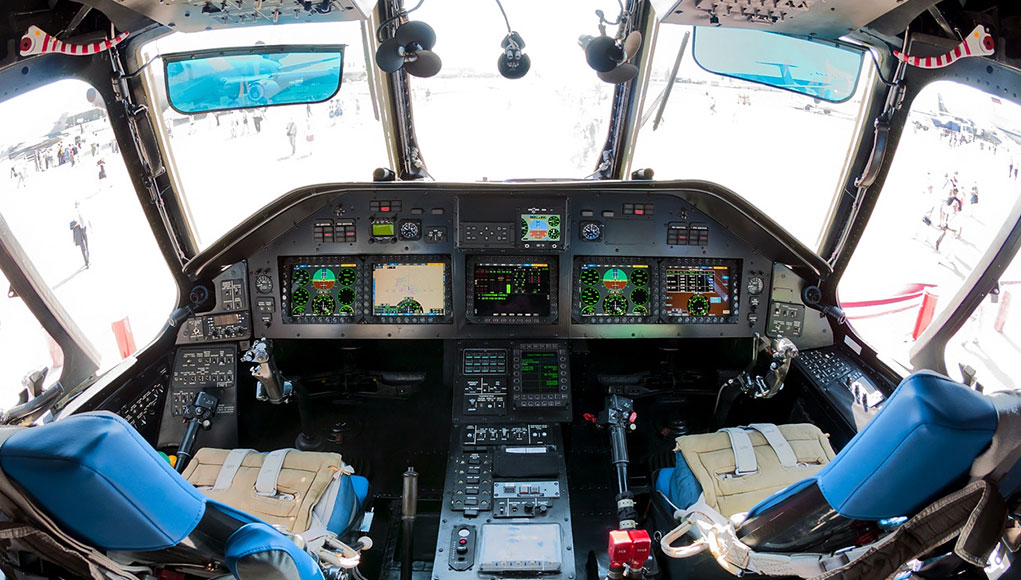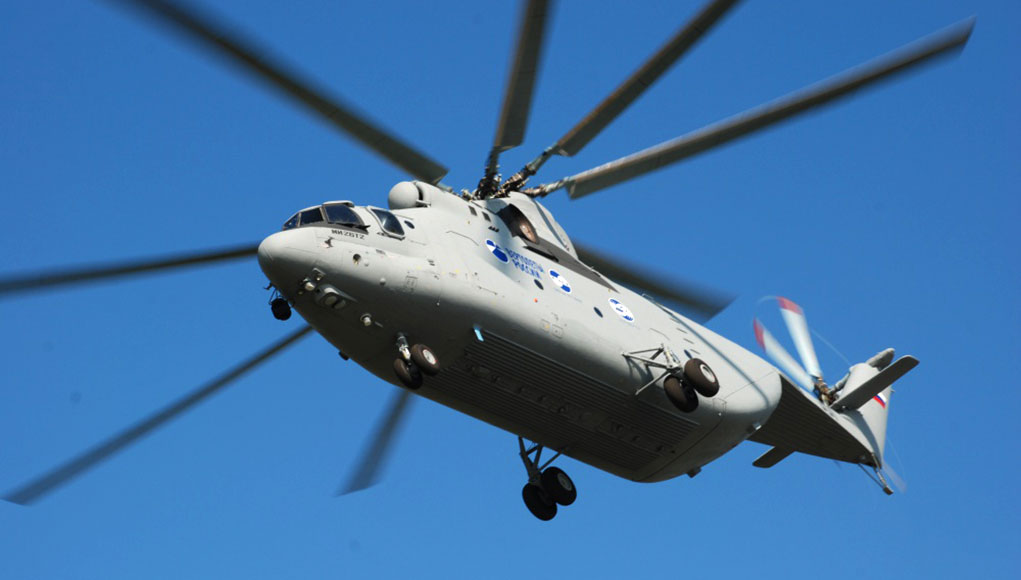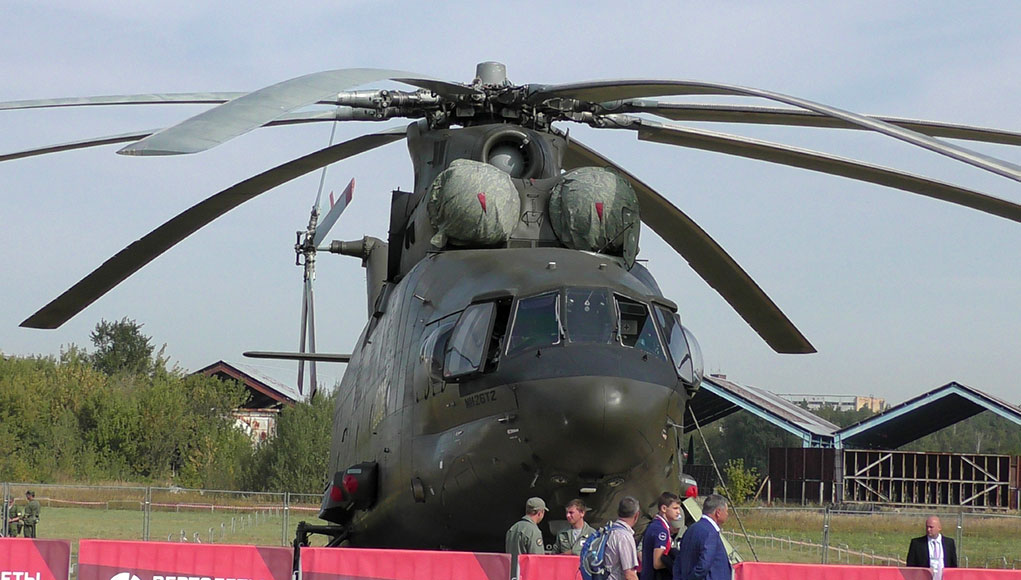Russian Helicopters Plans to begin test flights of the new, modernized variant of the Mil Mi-26 helicopter and fly its new helicopter to the Army 2018 exhibition near Moscow by the end of the month. Following the manufacturer’s flight tests the helicopter will be handed over to the government for operational tests. It will be the heaviest variant of the Mi-26 to be operated by the Russian forces. “Mi-26T2V will be even more efficient and reliable, even when used in bad weather and difficult terrain,” said Russian Helicopters CEO Andrey Boginsky.
The Mi-26T2 is the current variant, has a maximum takeoff weight of 56,000 kg (112,000 lbs), with payloads up to 20 tons (40,000 lbs.) The new helicopter will offer the same performance. As a modernized version it will bring earlier models to the T2 standard. The Mi-26 is operated by a crew of five but the improvements introduced by the BREO-26 avionics suite enables most missions to reduce the to crew to 2-3 persons.
The Russian military customer required the Mi-26T2V to complete tasks in regions with complex physical, geographical and adverse climatic conditions, at any time of the day, in civil airspace and routes or uncharted terrain and airspace, including featureless terrain. It will be equipped to survive enemy fire and air defenses as well as electronic jamming and countermeasures.

The new version differs from the current Mi-26 in its new modern NPK90-2V (BREO) integrated avionics, which significantly simplifies the piloting of the helicopter. The avionics suite features a new digital flight computer and mission management that enable the crew to fly fully automatic modes, follow predefined routes, arrive at a preset point, perform approach and final approach maneuvers, and return to the main or alternate aerodrome. The navigation and communications systems were improved, with NAVSTAR/GLONASS support and the introduction of satellite communications terminal. The interface with the crew uses a digital cockpit and multifunction color displays and indicators that significantly reduce crew workload.
The new variant will have the Vitebsk airborne defensive suite detects threats, enables the crew to take evasive maneuvers and deploy countermeasures against threats. Other safety and survivability enhancements include improved night operations, employing night vision goggles (NVG) compatible infrared lighting, crash worthy seating for the crew.
Reaching a maximum speed of 295 km/h (183 mph) and cruise at 255 (158 mph) the Mi-26T2 has a range of 800 km (497 miles). When equipped with four additional fuel it can ferry up to 905 km (562 miles). The extra fuel can also support aerial refueling of other helicopters or fixed wing aircraft. The service ceiling is 4,600 m (15,000 ft) with hovering ceiling of 1,520 m. (5,000 ft).





















